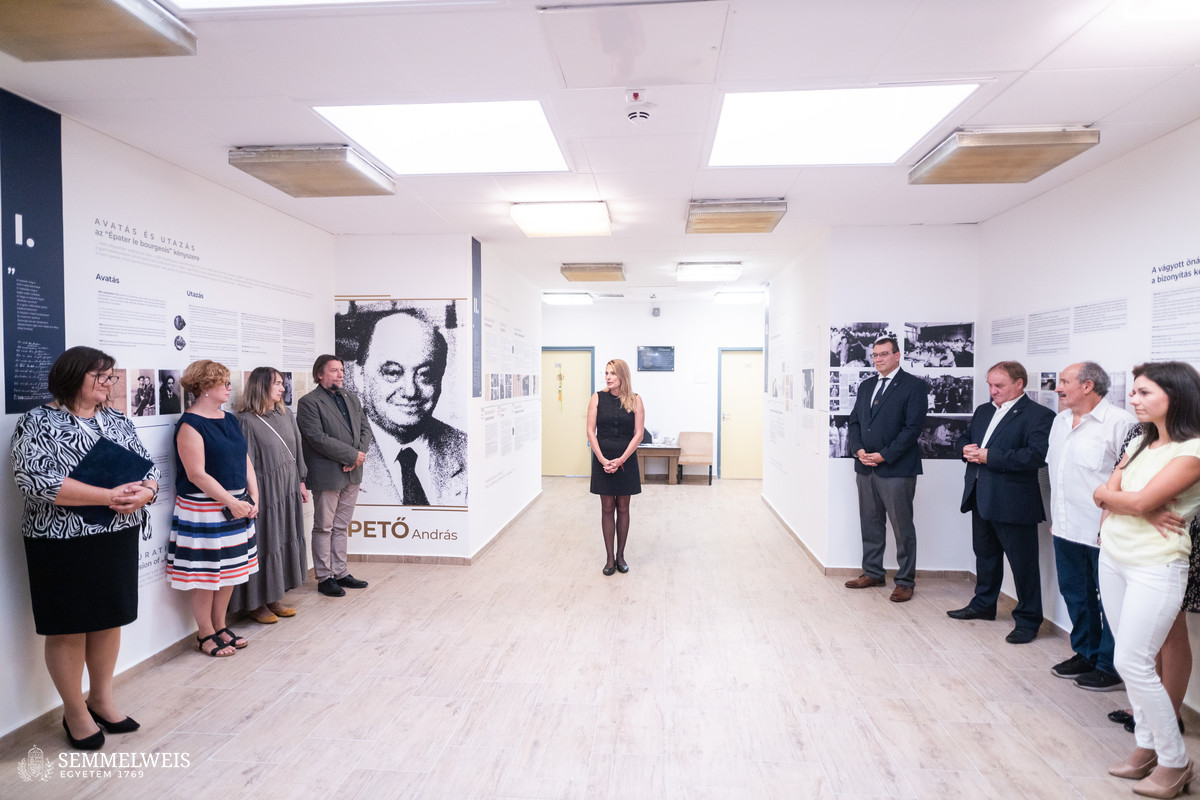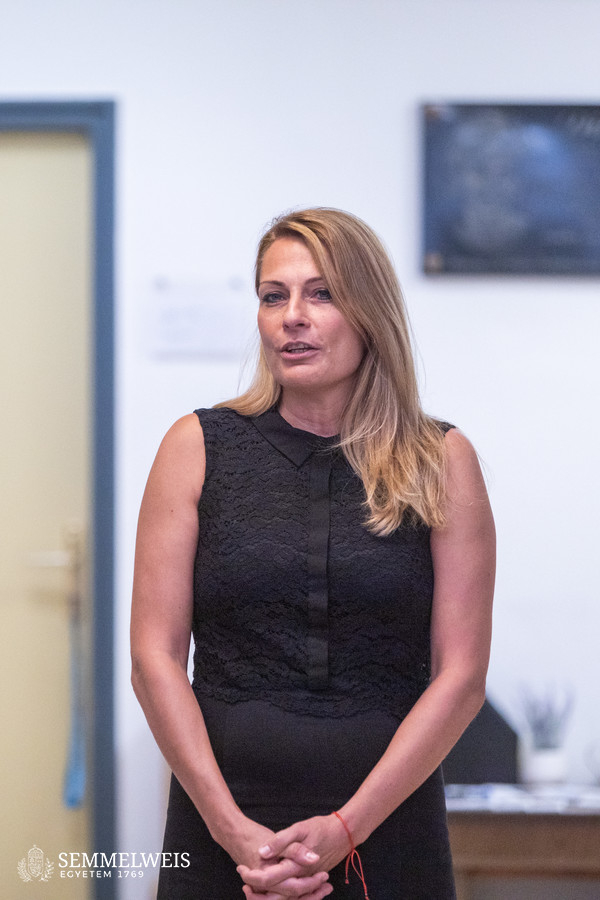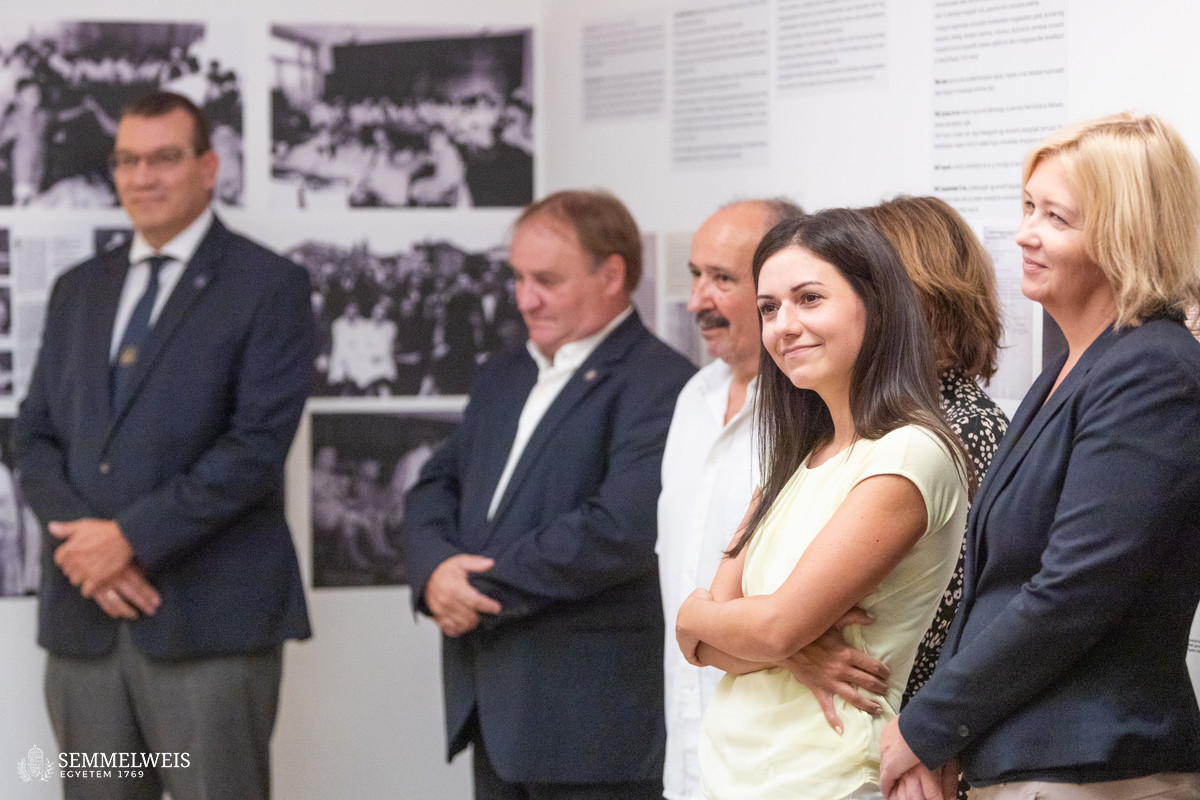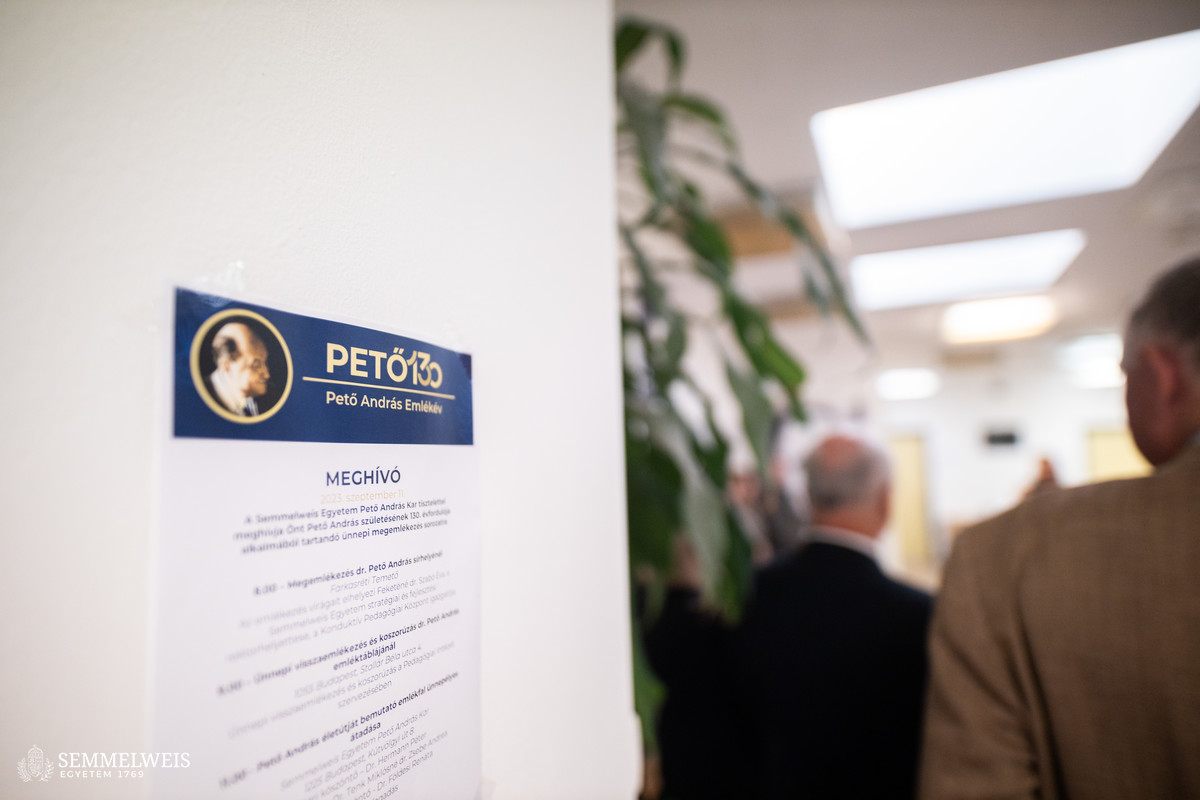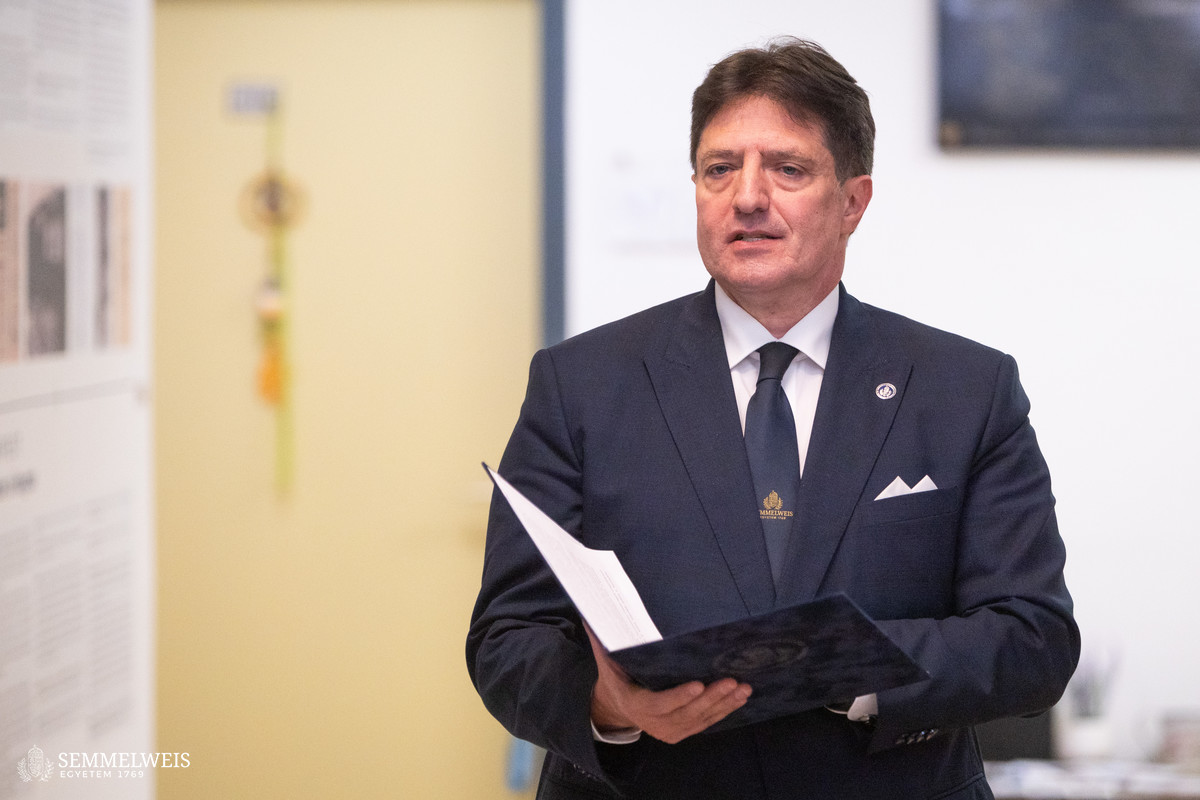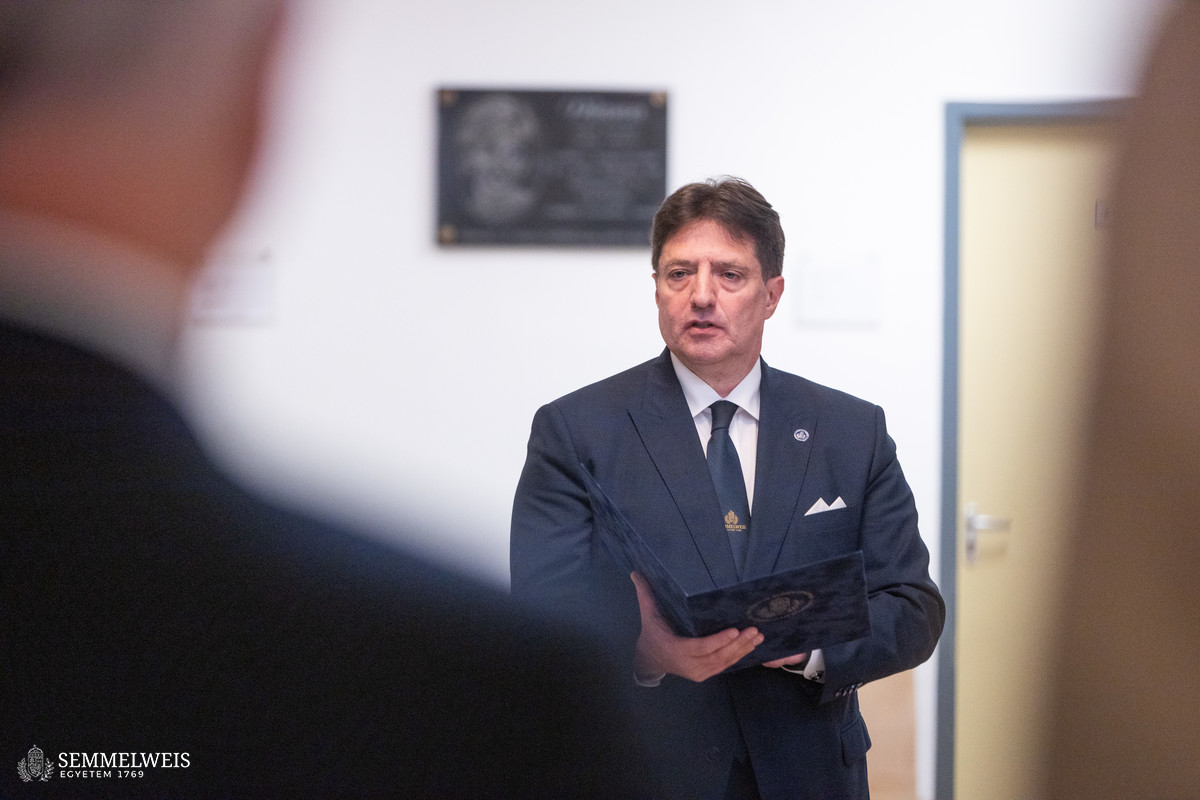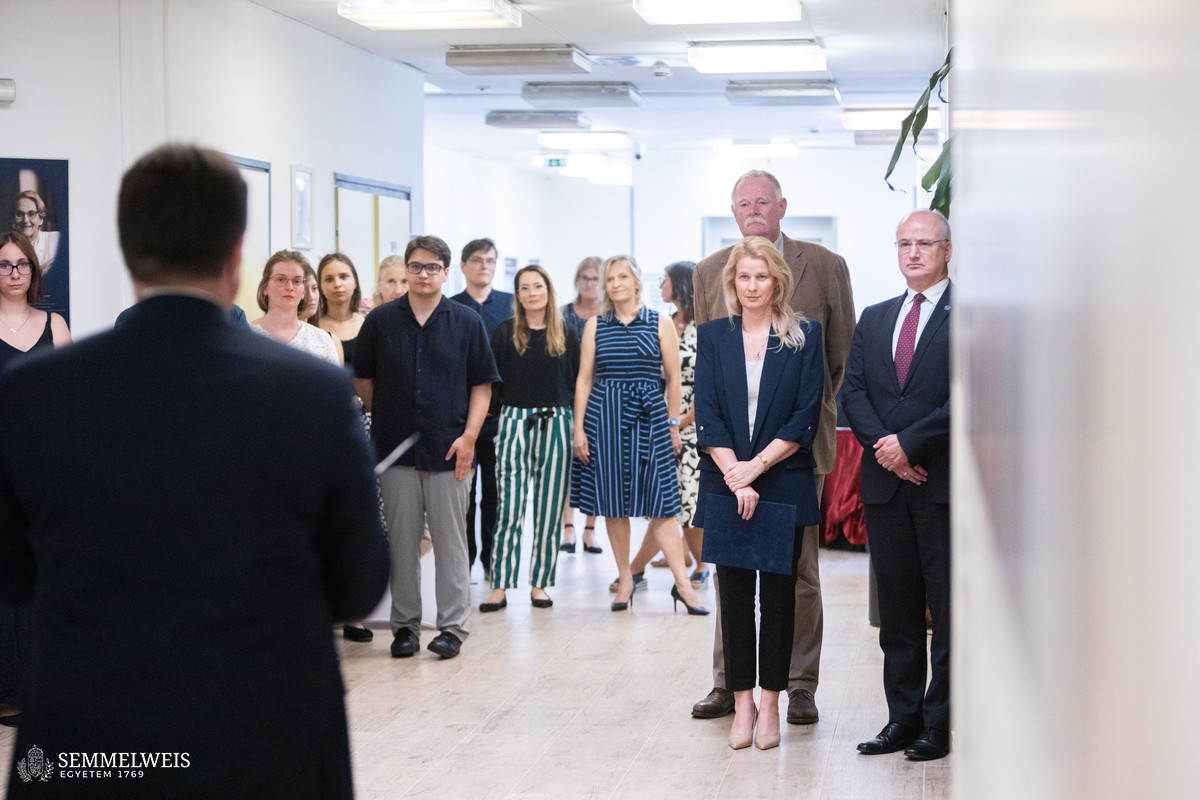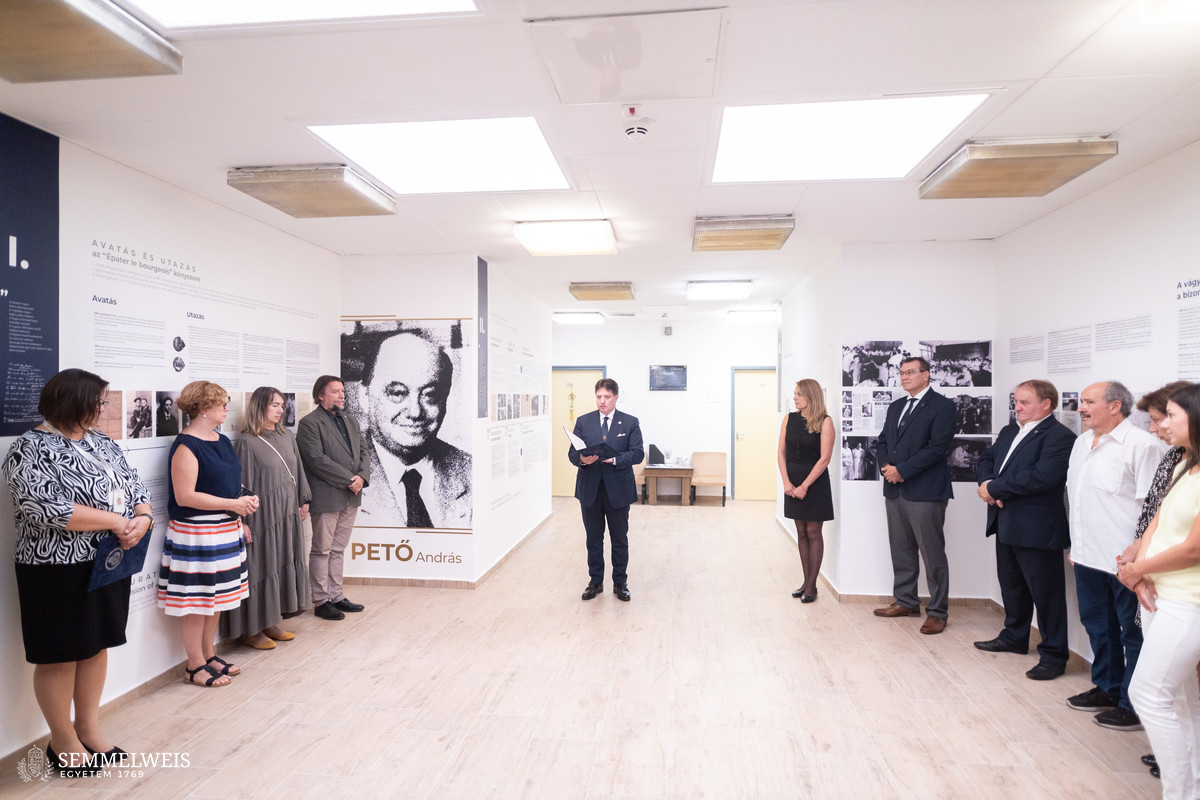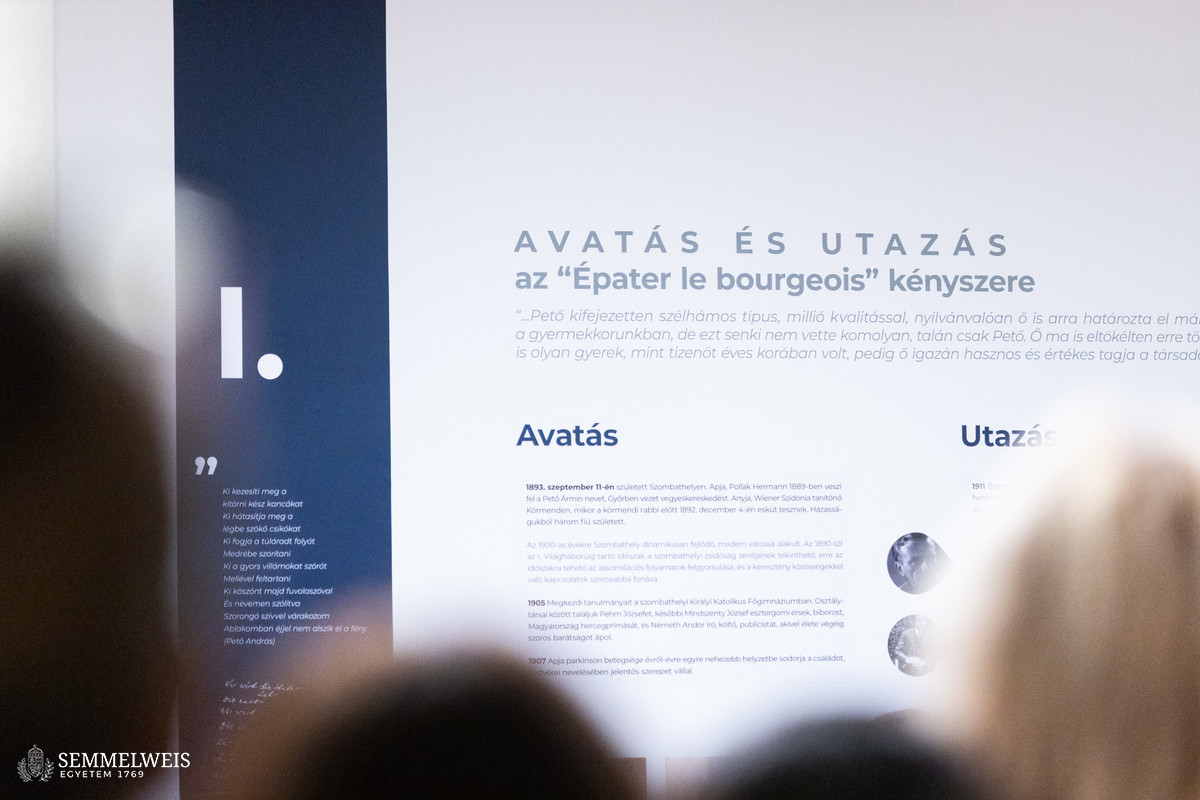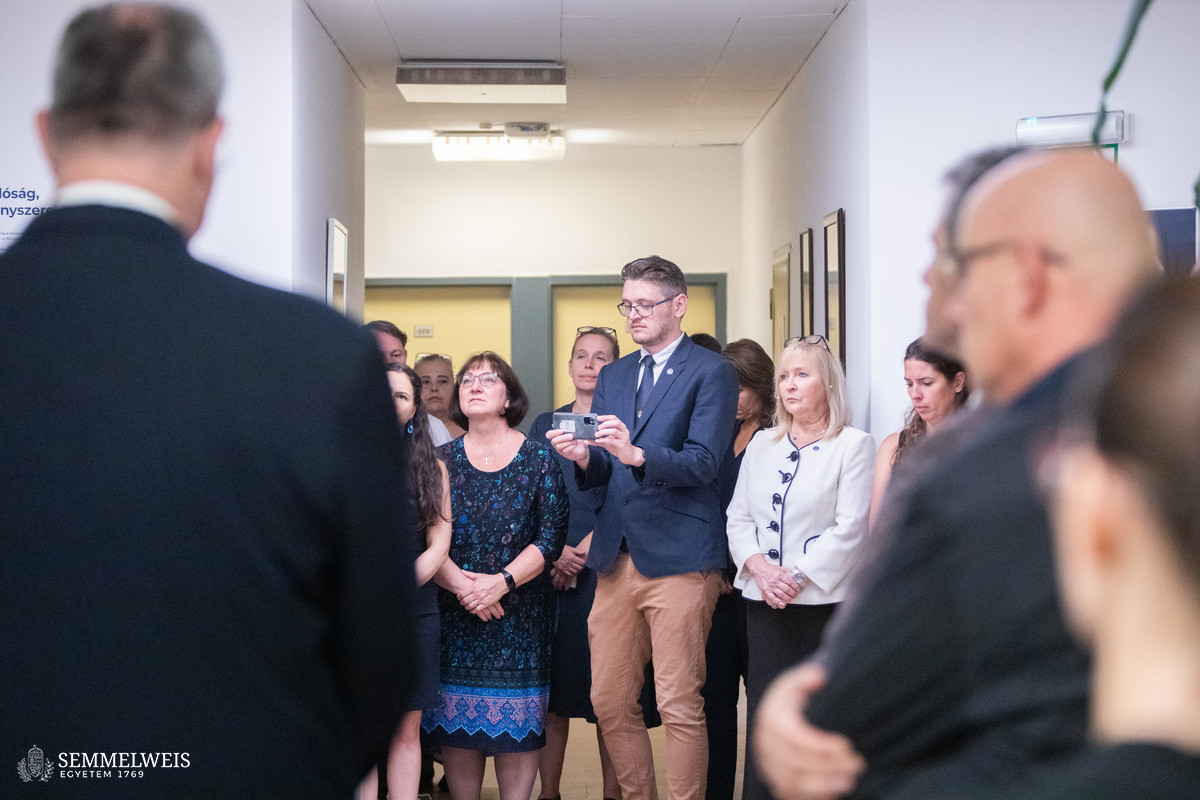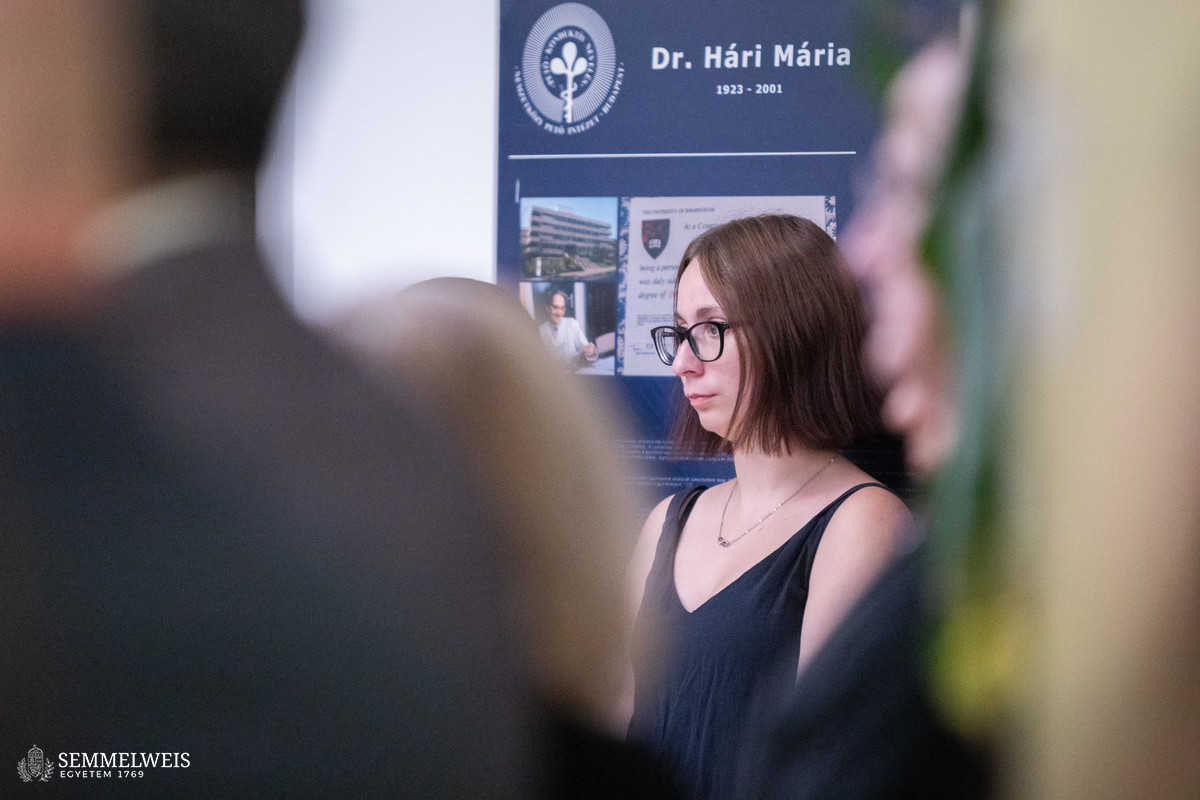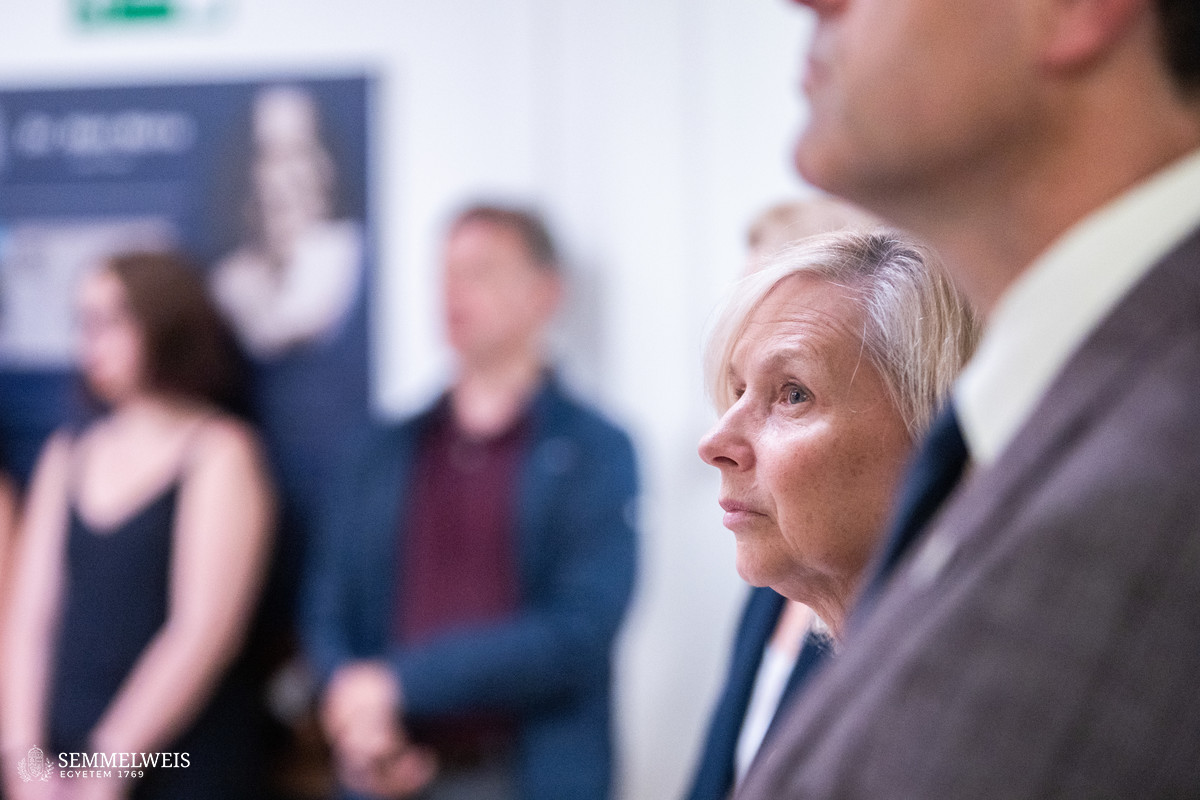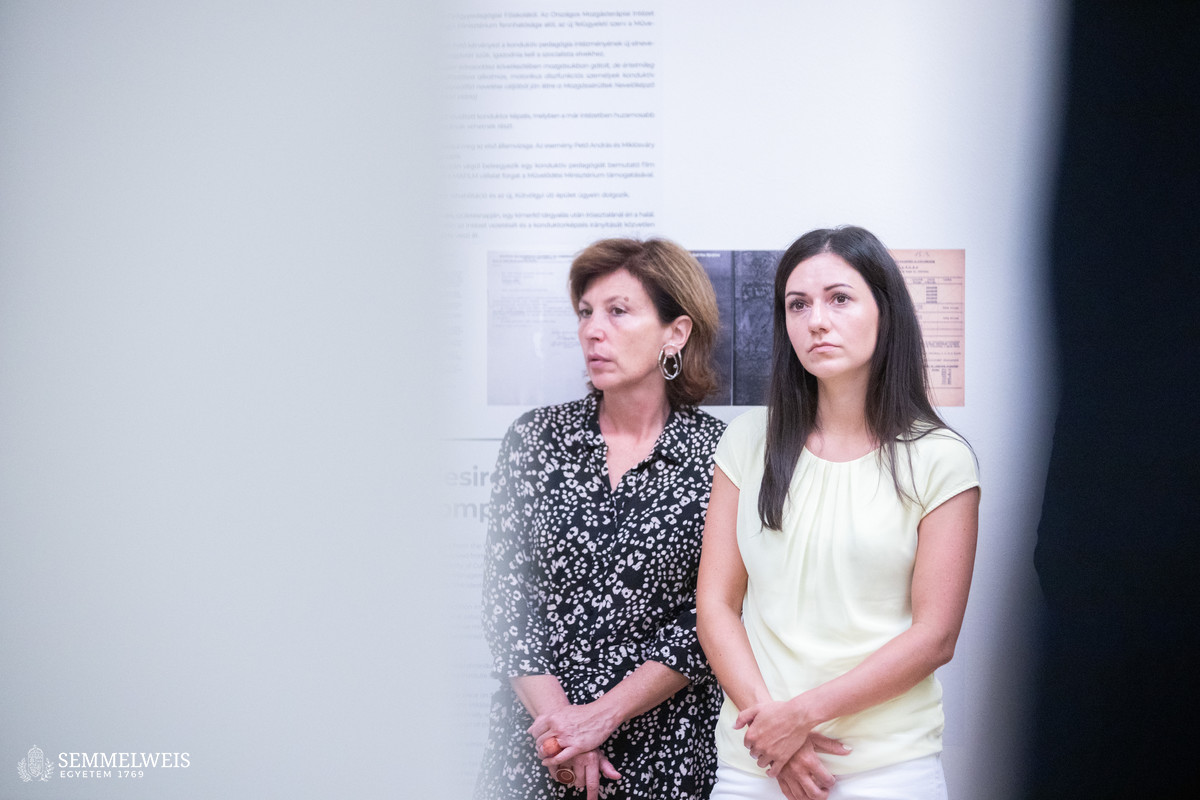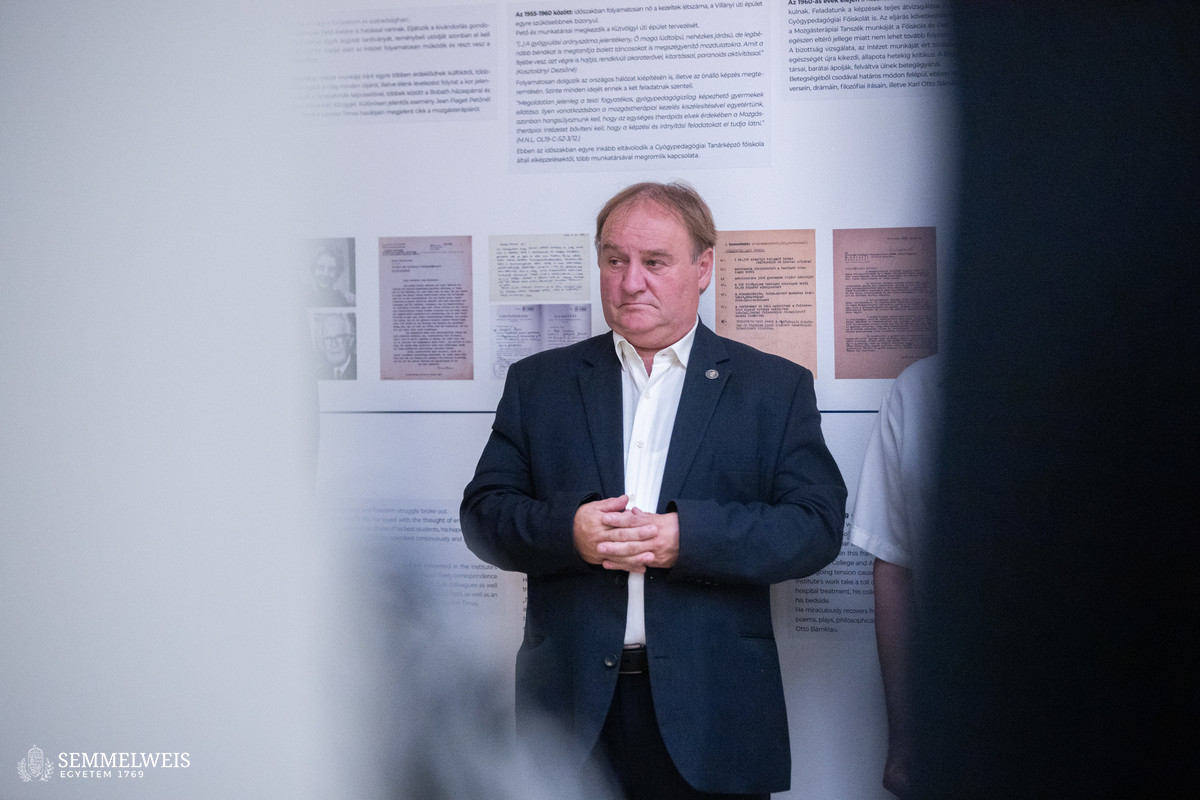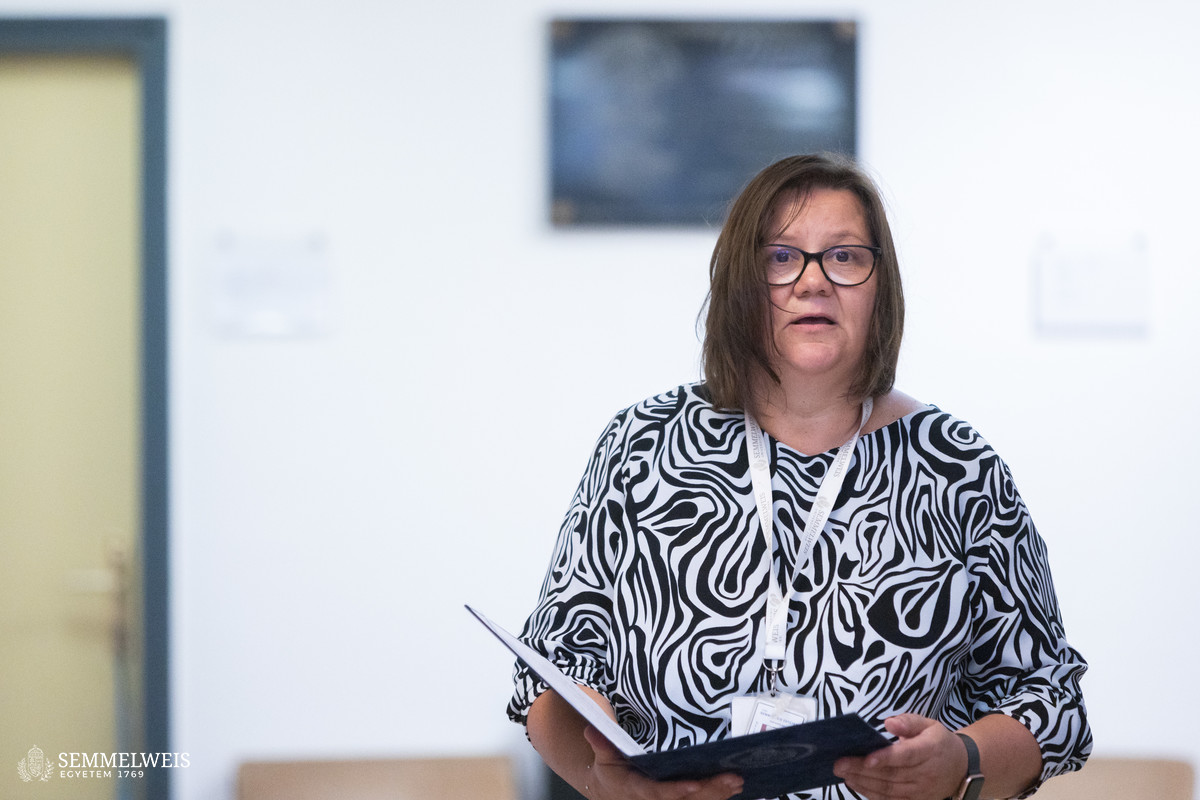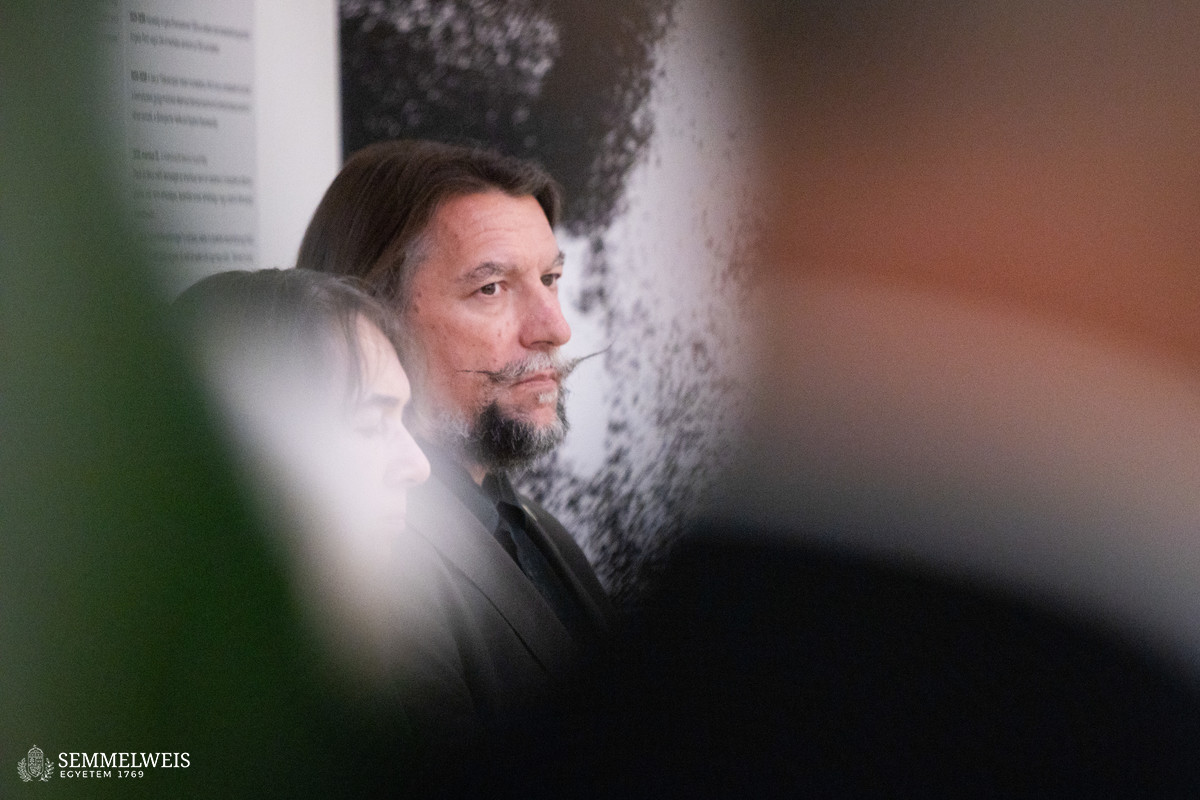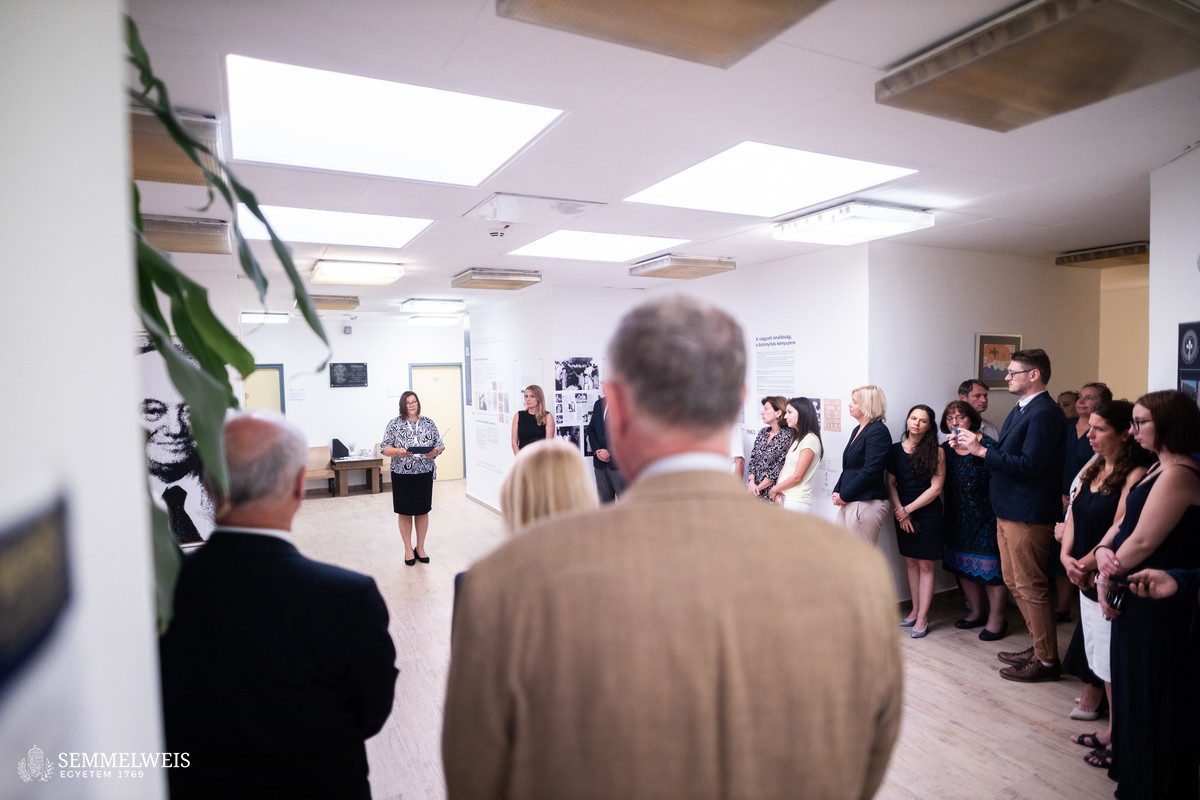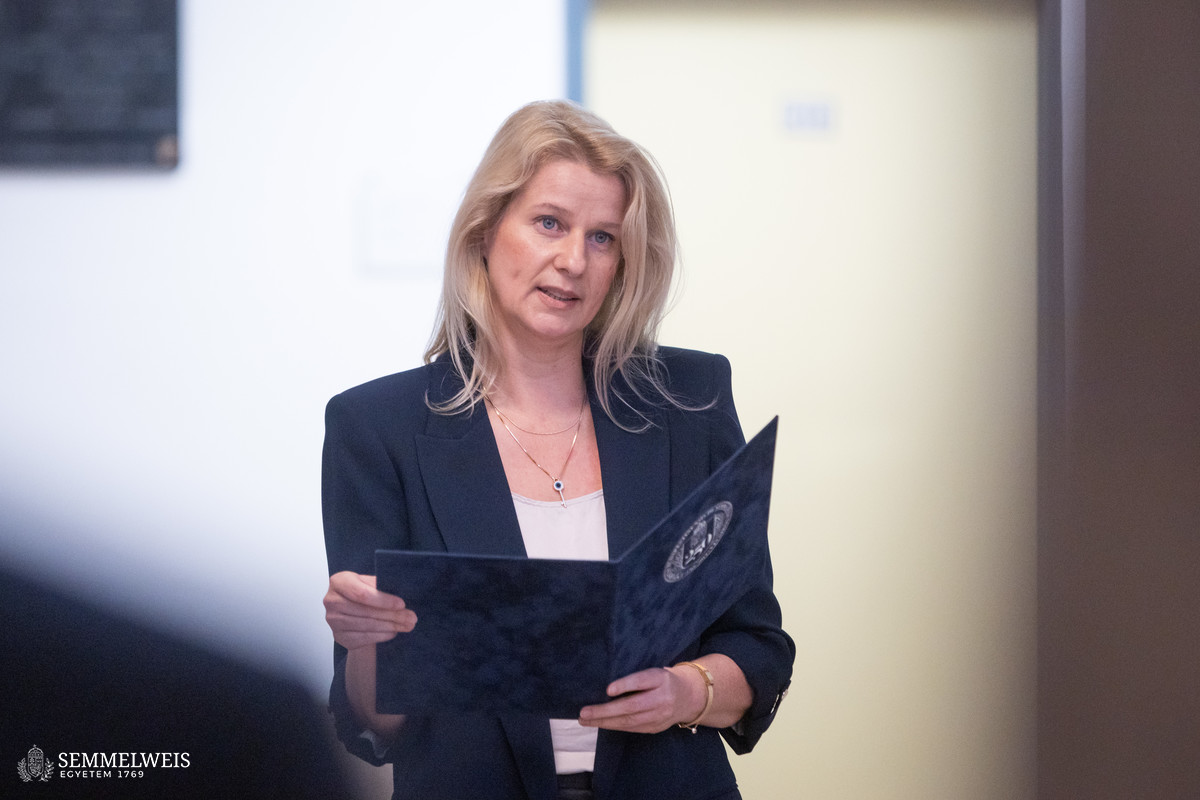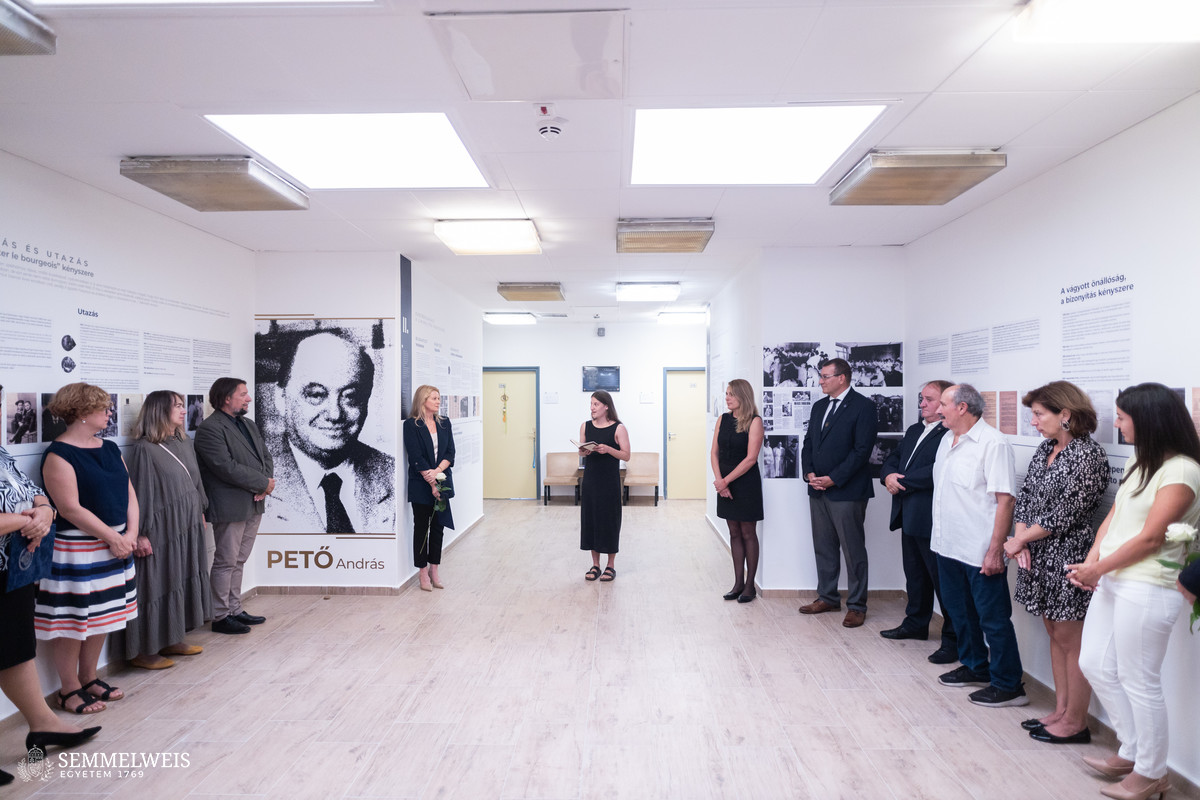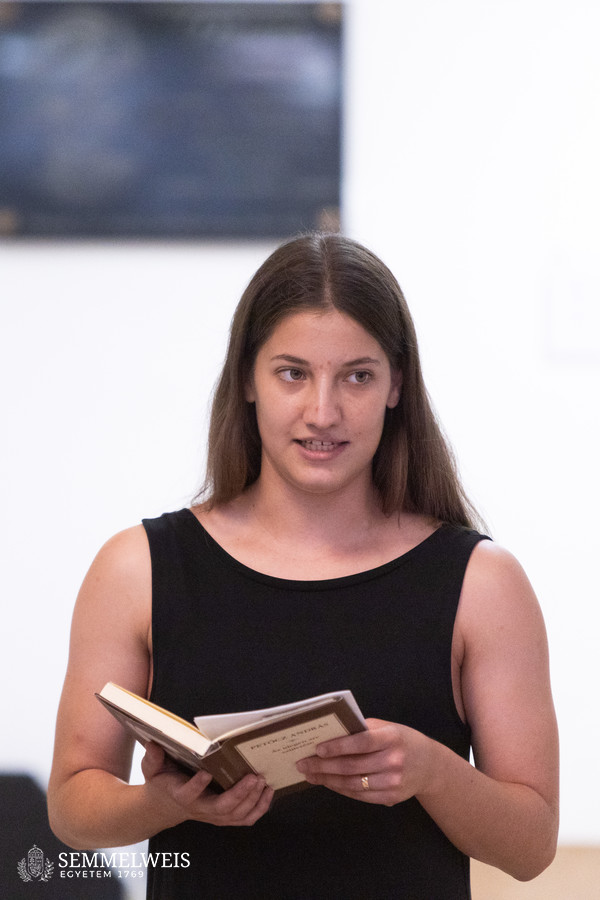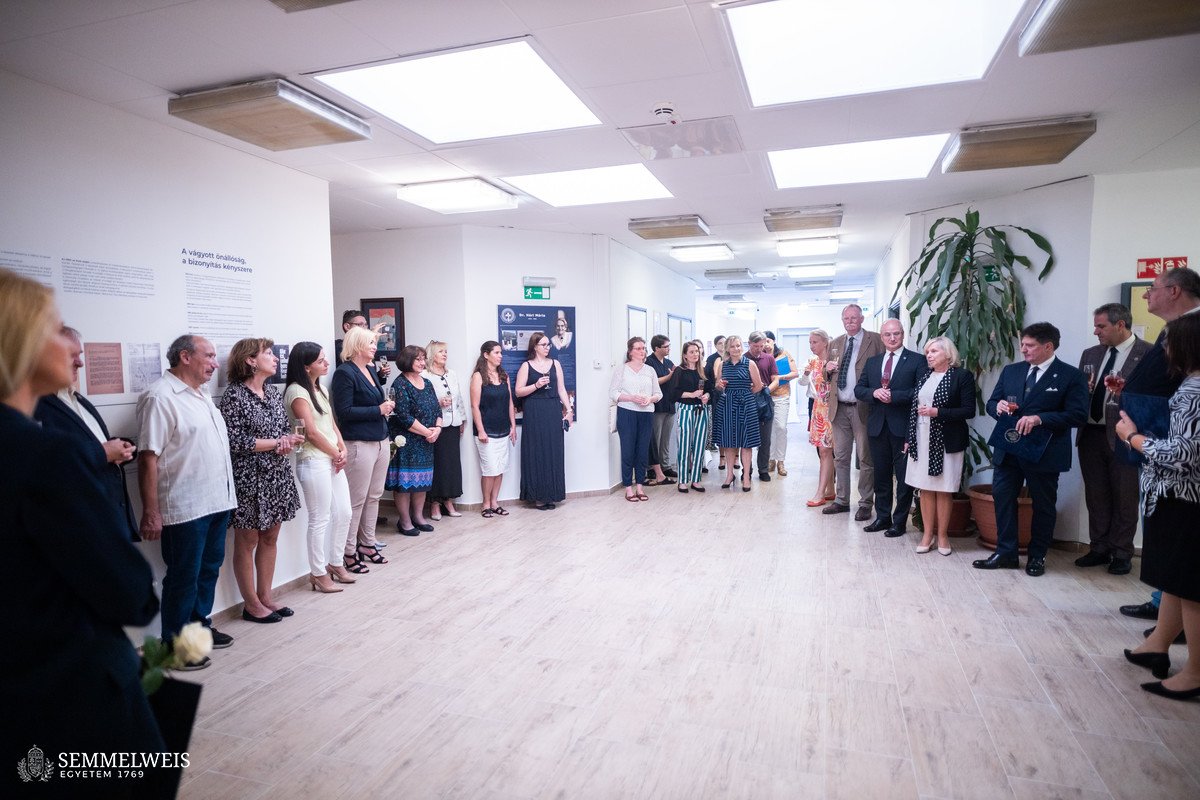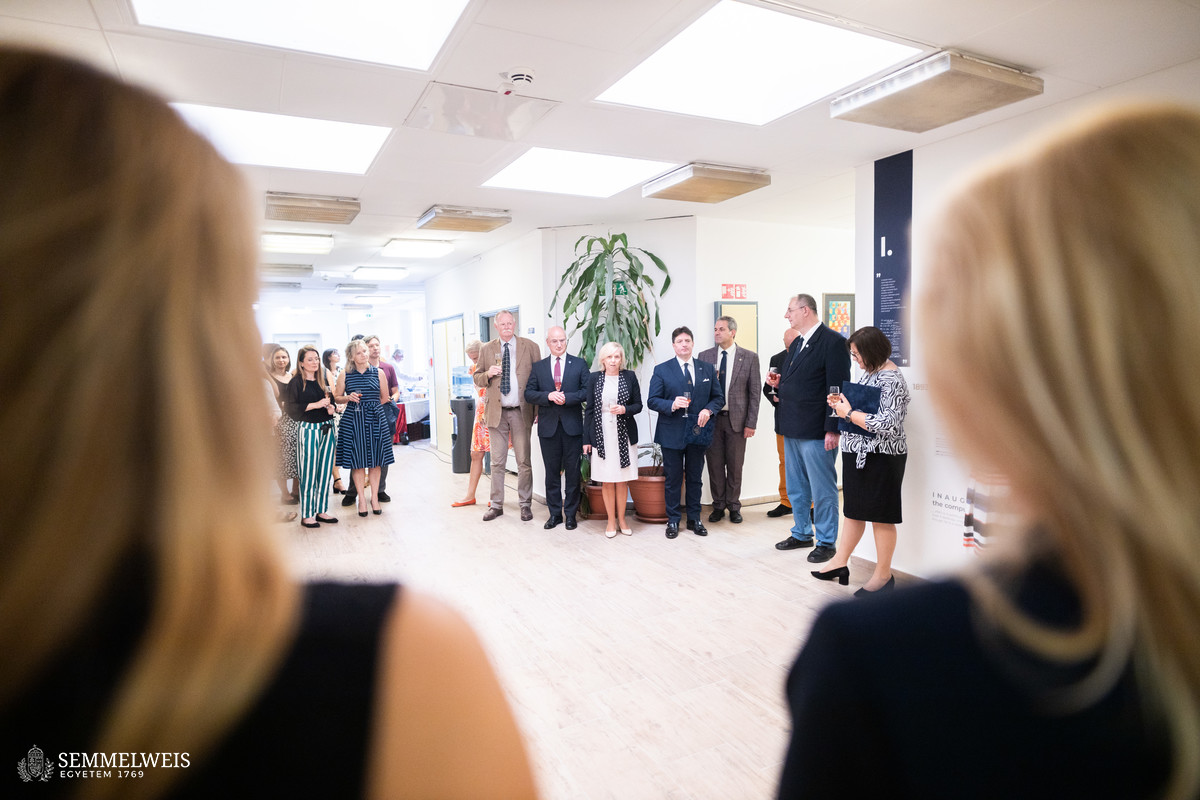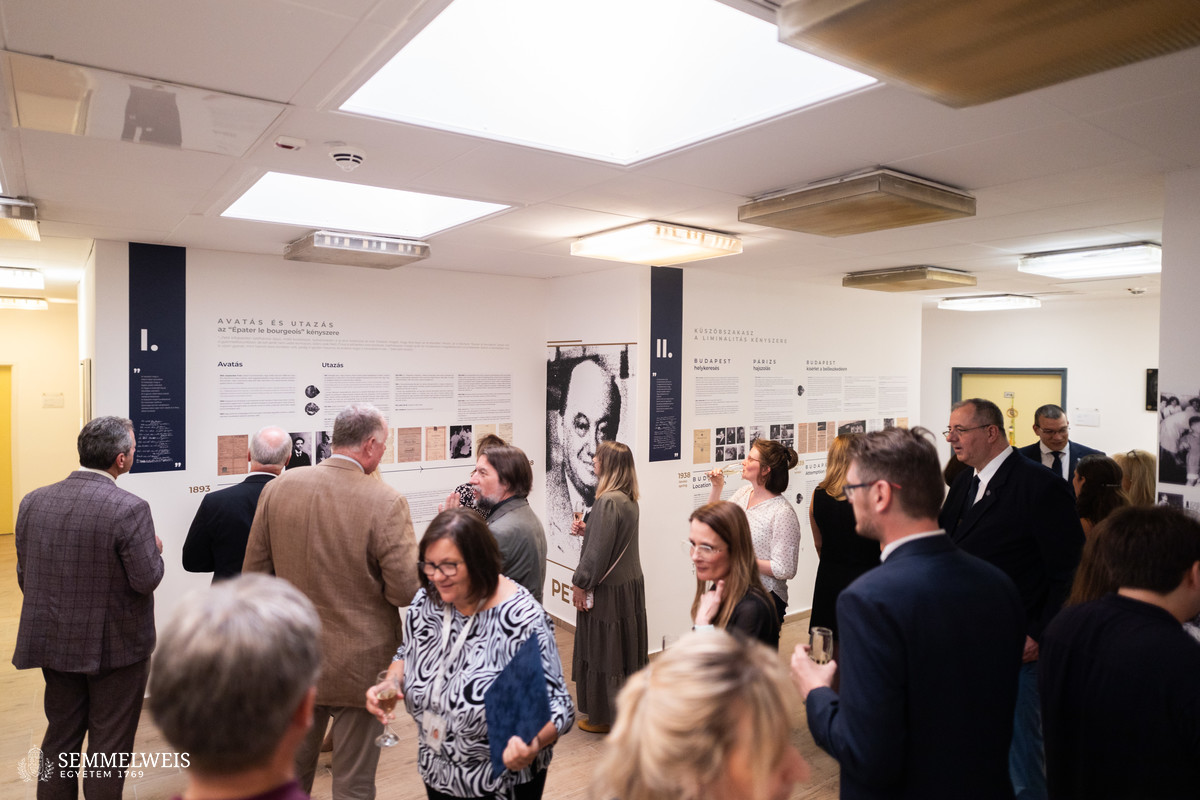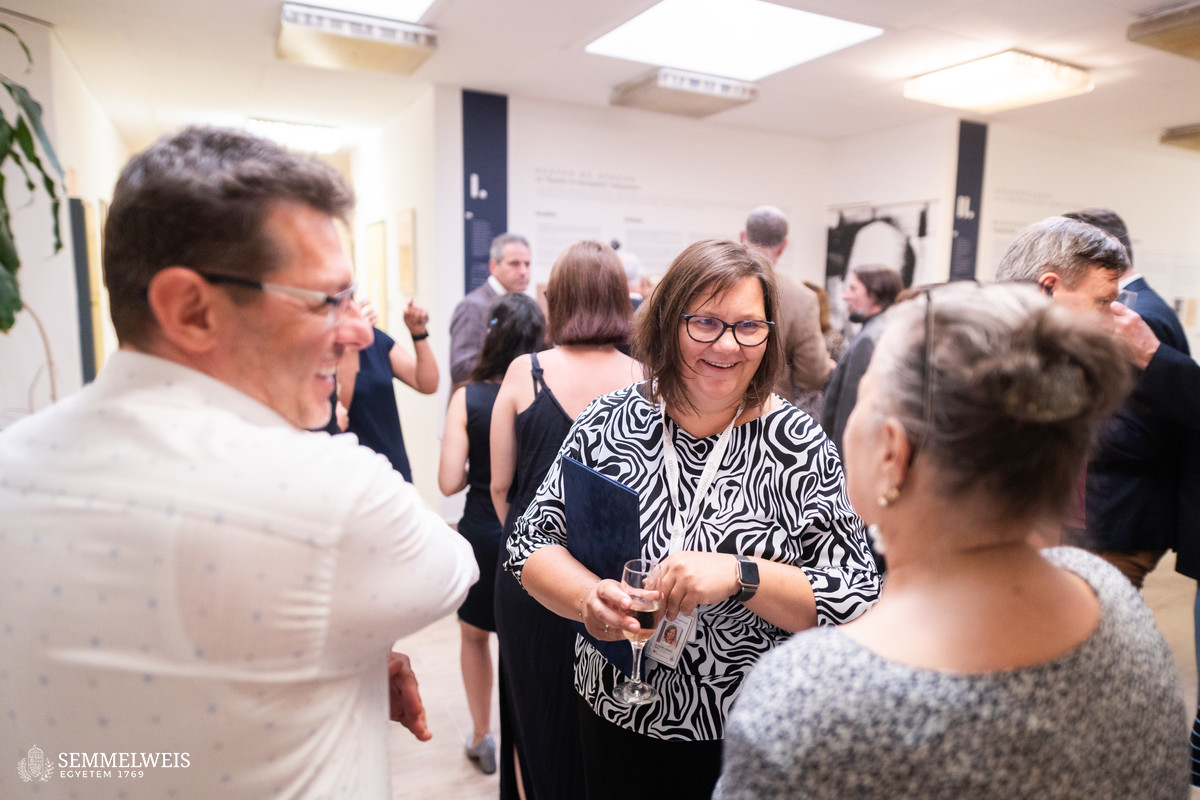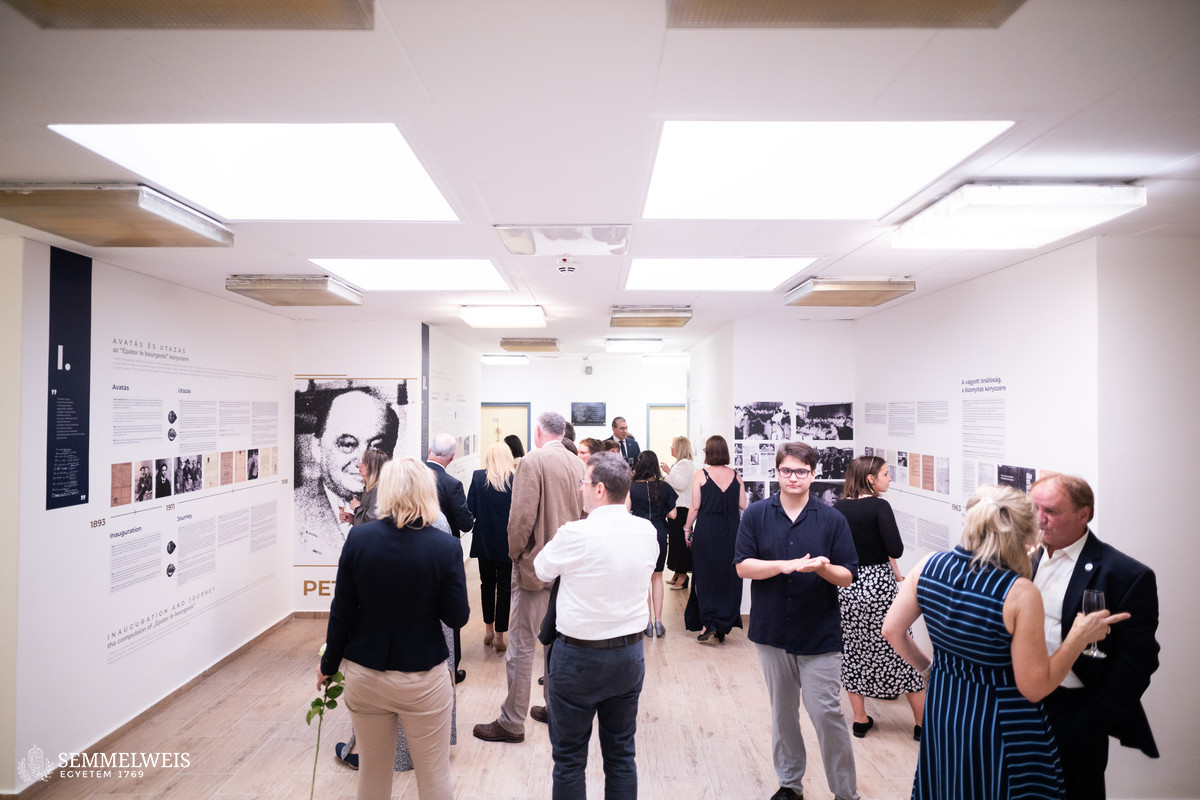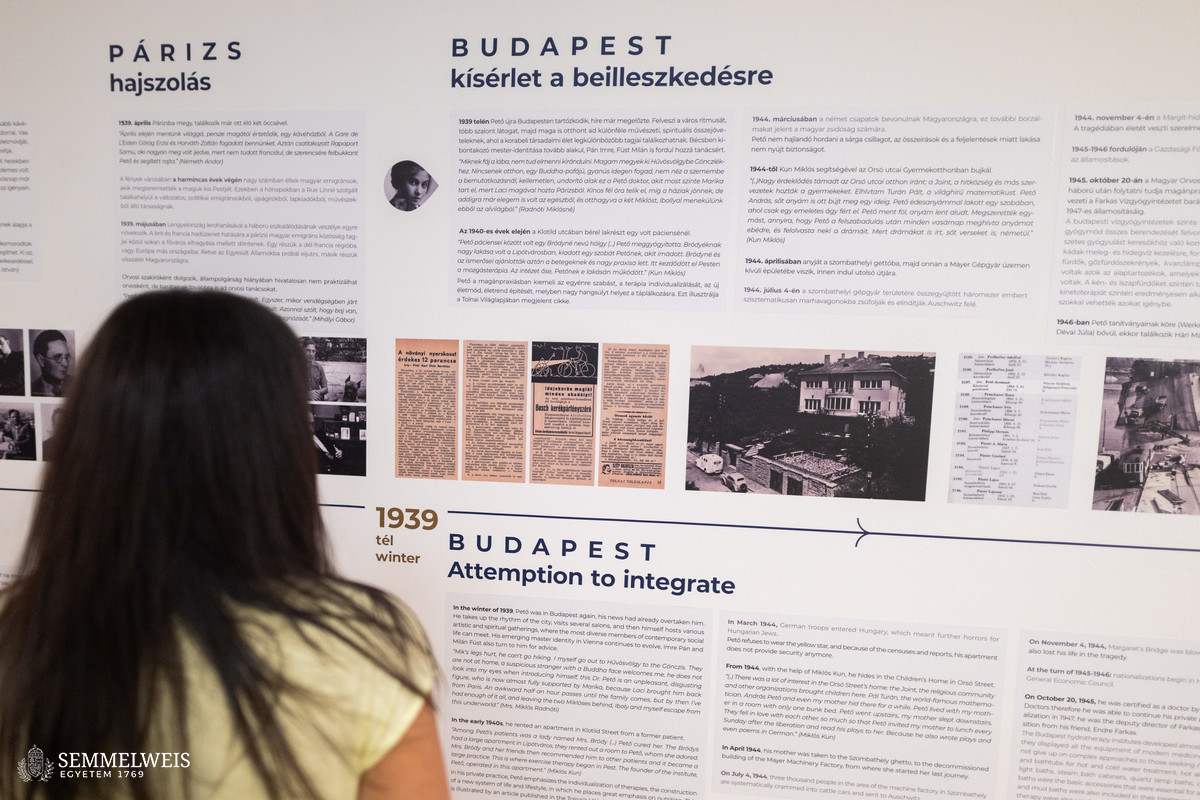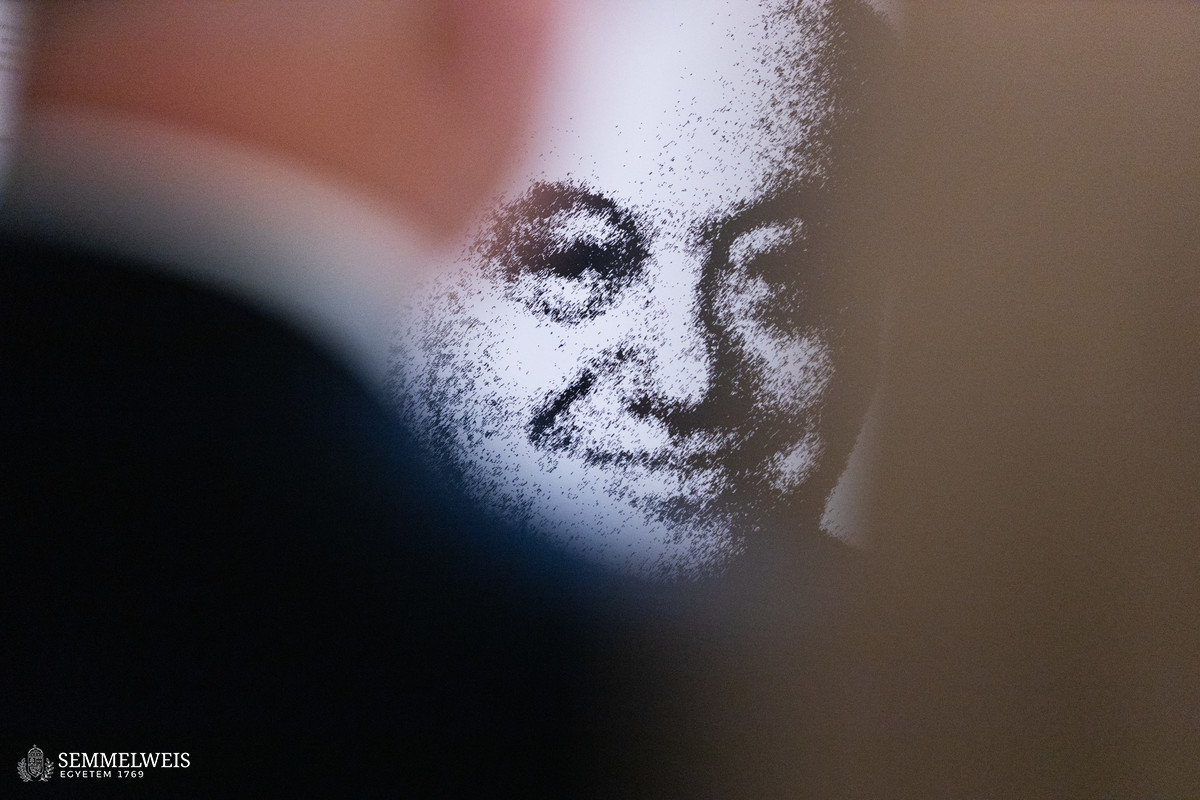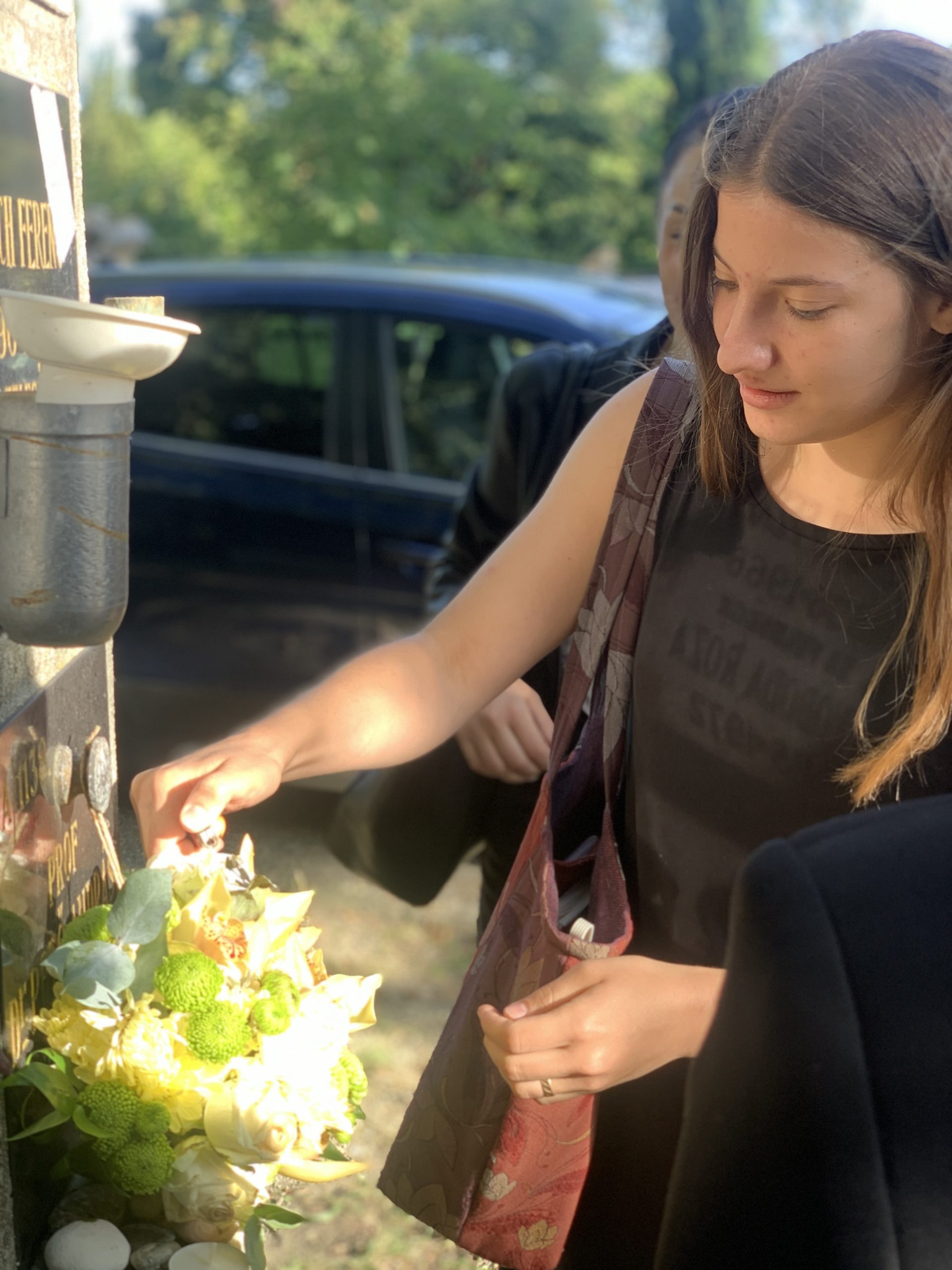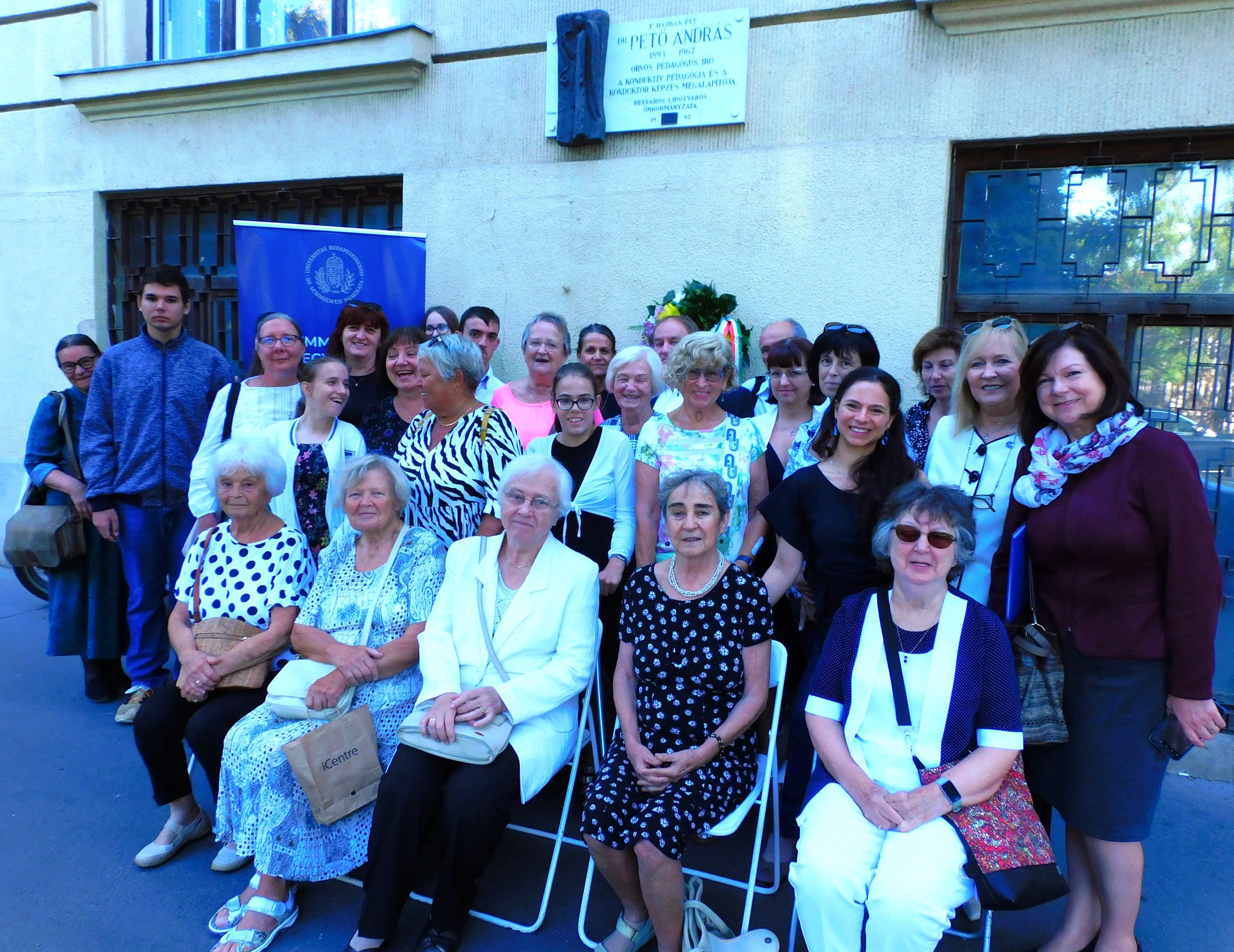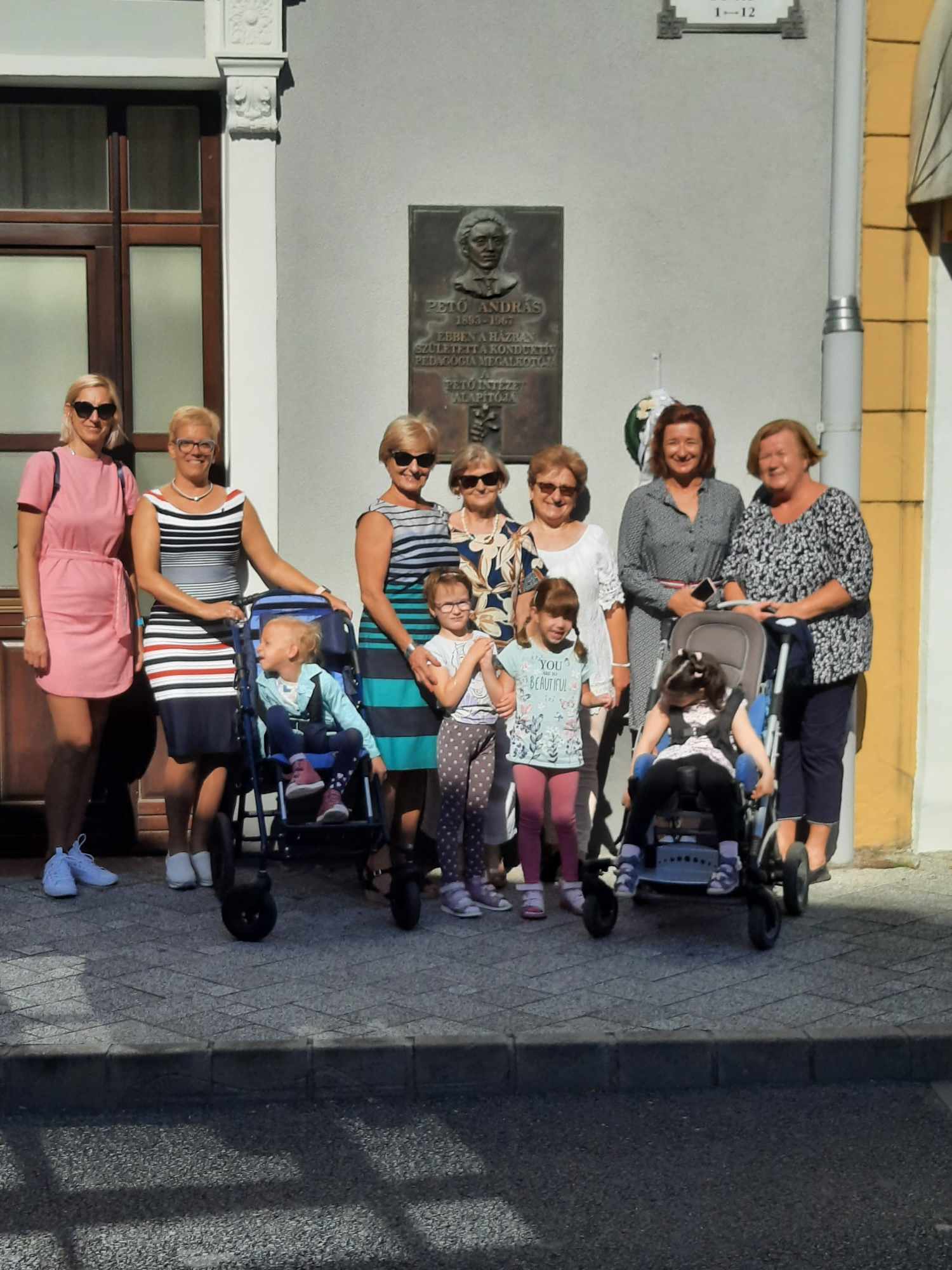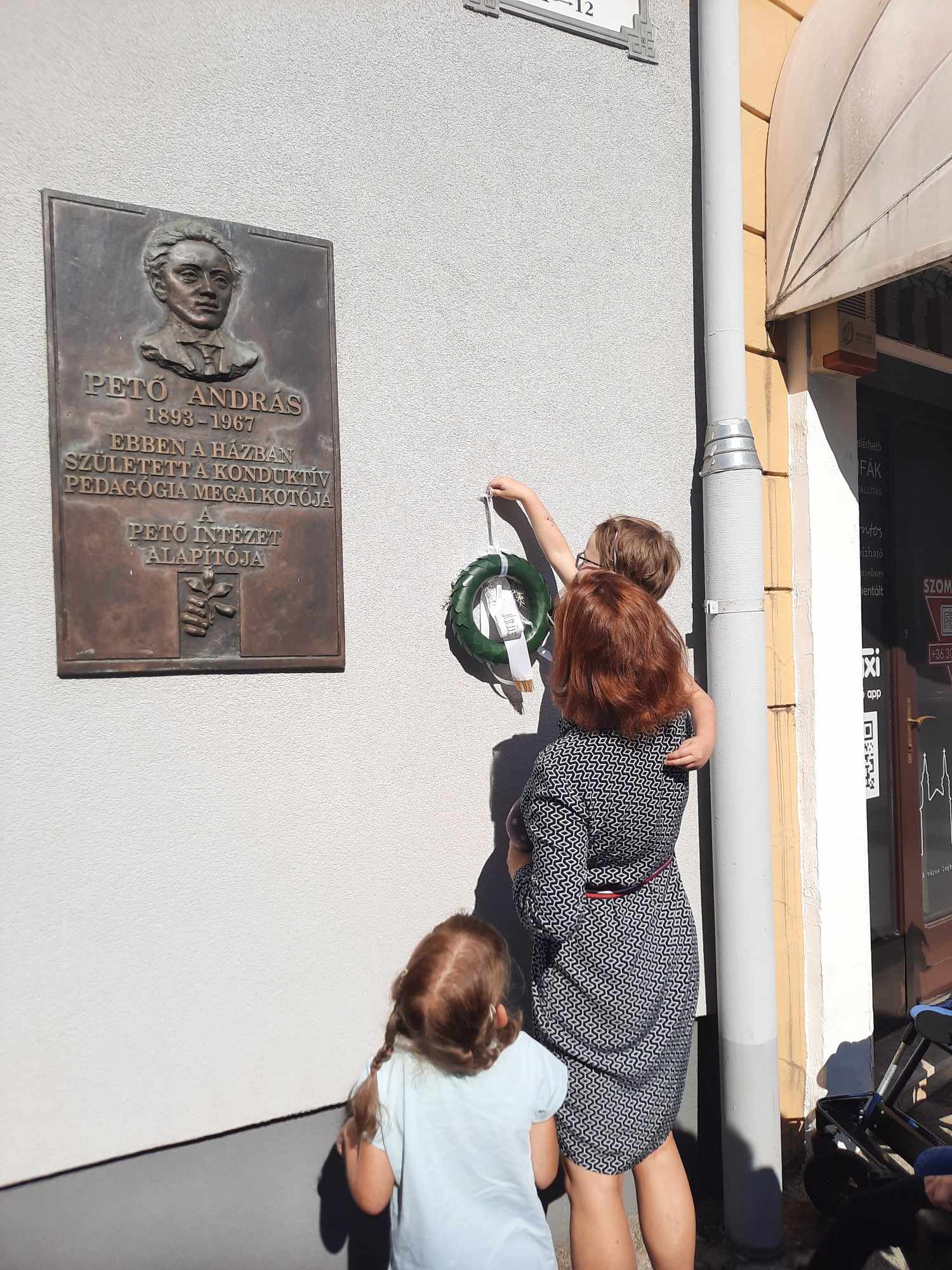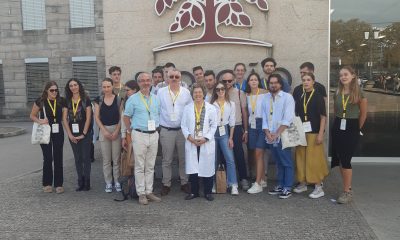The founder of conductive pedagogy, Dr. András Pető was remembered with the inauguration of a memorial wall depicting his life at the András Pető Faculty (PAK) of Semmelweis University. The rich oeuvre of the versatile doctor and creator is still the subject of research and publications. The conductive pedagogy method he devised, which was recognized in Hungary as the first intellectual Hungarikum in 2006, is now known worldwide. As part of Semmelweis University, the institution provides high-quality professional work and the opportunity for development.
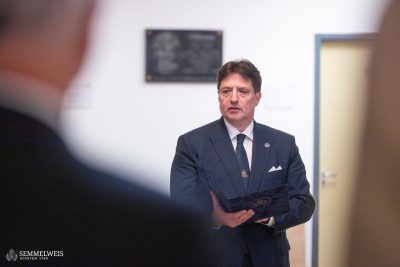 Looking at the life path of András Pető, it is striking that many things happened in his life that are similar to that of Ignác Semmelweis. In case of both doctors, their discovery was not recognized by their contemporary professional community, and it took years and decades for the world to realize the greatness of their method, according to Dr. Péter Hermann, the Vice Rector for Educational Affairs at Semmelweis University. He added that, contrary to Ignác Semmelweis, however, András Pető was able to receive all the recognition while he was still alive and saw the implementation of conductive pedagogy. And today it is the task of all of us to take care of the legacy he created, Dr. Péter Hermann pointed out.
Looking at the life path of András Pető, it is striking that many things happened in his life that are similar to that of Ignác Semmelweis. In case of both doctors, their discovery was not recognized by their contemporary professional community, and it took years and decades for the world to realize the greatness of their method, according to Dr. Péter Hermann, the Vice Rector for Educational Affairs at Semmelweis University. He added that, contrary to Ignác Semmelweis, however, András Pető was able to receive all the recognition while he was still alive and saw the implementation of conductive pedagogy. And today it is the task of all of us to take care of the legacy he created, Dr. Péter Hermann pointed out.
The Vice Rector emphasized the Faculty named after András Pető has been a defining member of the Semmelweis Family for the sixth year now – just as Semmelweis University provides solid foundations for the present and future of conductive pedagogy and conductor training:
With the fact that the András Pető Faculty has become an inseparable part of Semmelweis University, there is a more secure background, more predictable operation and more opportunities for the employees here to develop their work than ever before. Together, we are constantly developing educational facilities, community spaces, and sports facilities. All teachers and students of the Pető Faculty will benefit from the current campus development program.”
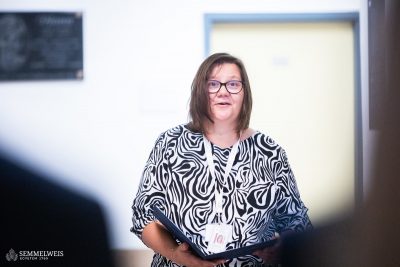 The Pető memorial wall, which has just been inaugurated, provides an insight into both András Pető’s life and the history of the university faculty that bears his name. These two have merged since the birth of the method. Pető spent all his time at the Villányi Street building and the predecessor institutional locations until his death 56 years ago, said Dr. Andrea Zsebe Tenk, Dean of PAK. If András Pető were here with us, he would be happy that every year another 85-90 young people would like to learn the conductive education system, master the method and thus give our fellow human beings in need a vision for the future, she added, emphasizing that his methodology is much more than mechanical movement practice, its special feature is that it focuses on the humane and the human:
The Pető memorial wall, which has just been inaugurated, provides an insight into both András Pető’s life and the history of the university faculty that bears his name. These two have merged since the birth of the method. Pető spent all his time at the Villányi Street building and the predecessor institutional locations until his death 56 years ago, said Dr. Andrea Zsebe Tenk, Dean of PAK. If András Pető were here with us, he would be happy that every year another 85-90 young people would like to learn the conductive education system, master the method and thus give our fellow human beings in need a vision for the future, she added, emphasizing that his methodology is much more than mechanical movement practice, its special feature is that it focuses on the humane and the human:
“The essence of Pető’s brilliant work is that he saw the problem arising from damage to the nervous system differently, and therefore created a new solution for the cooperation between the teacher (conductor) and the injured person in the teaching-learning process. It was revolutionary in the fact that it united the fields of expertise that were separated at the time – and to a large extent even today.”
The new memorial wall that has just been created presents and reflects the way of thinking that looks at the life work of the faculty’s namesake reflecting the needs of today’s times, stressed Dr. Renáta Földesi, who as a researcher has been dealing with the life and work of András Pető for several years. The Director of the Conductive Pedagogical Institute of PAK also added that what can be seen and read on the memorial wall can be absorbed, enjoyed and understood, but the wall also contains the original message: the legacy and the task left to us by our predecessors.
 András Pető (Szombathely, September 11, 1893 – Budapest, September 11, 1967) graduated from the University of Vienna as a doctor in 1921. During and after his studies, he gained an insight into the operation of several clinics and several branches of medicine and dealt with psychological diseases as well as orthopedics and pulmonary medicine. He used this knowledge mostly in the world of sanatoriums as a therapist in prestigious institutions. In 1938, he was forced to flee Austria as a result of the Anschluss. He came back to Hungary and then, like many creators and artists, he went to Paris, where he was allowed to work in book printing and magazine publishing, but not in his profession. After that, he returned to Budapest, where he started a private practice. Several well-known public and literary personalities were among his patients. In 1944, he found refuge from persecution with the help of his friend, the psychiatrist Miklós Kun. After WWII, he received the opportunity to develop his concept and lay the foundations of conductive pedagogy within the framework of the Special Education Teacher Training College. As a result of his success and ever-increasing popularity, he was able to establish an independent facility in 1950, the Villányi Street institute, which still operates today.
András Pető (Szombathely, September 11, 1893 – Budapest, September 11, 1967) graduated from the University of Vienna as a doctor in 1921. During and after his studies, he gained an insight into the operation of several clinics and several branches of medicine and dealt with psychological diseases as well as orthopedics and pulmonary medicine. He used this knowledge mostly in the world of sanatoriums as a therapist in prestigious institutions. In 1938, he was forced to flee Austria as a result of the Anschluss. He came back to Hungary and then, like many creators and artists, he went to Paris, where he was allowed to work in book printing and magazine publishing, but not in his profession. After that, he returned to Budapest, where he started a private practice. Several well-known public and literary personalities were among his patients. In 1944, he found refuge from persecution with the help of his friend, the psychiatrist Miklós Kun. After WWII, he received the opportunity to develop his concept and lay the foundations of conductive pedagogy within the framework of the Special Education Teacher Training College. As a result of his success and ever-increasing popularity, he was able to establish an independent facility in 1950, the Villányi Street institute, which still operates today.
András Pető already realized at the beginning of the period of institutionalization that the activity of the specialist is interdisciplinary, requiring both health science and pedagogical knowledge. For this, he had to implement a special training, a special curriculum; based on his vision, he and his colleagues planned and started conductor trainings in the mid-1960s, said Dr. Renáta Földesi.
In addition to several leaders of the university and the creators of the exhibition, András Schumicky, a descendant of the Schumicky family who is personally connected to Pető, took part in the event. It has only recently become clear from new research that in 1944 his ancestors owned the villa building on Orsó Street, which was made available to the Red Cross, and provided shelter to dozens of children and adults, including András Pető, who was thus able to escape the Holocaust. Now, as the president of the Act Up for the Children of Pető Institute Foundation, András Schmucky provided the funding for the realization of the memorial wall.
Róbert Tasnádi
Translation: Mária Sánta
Photo: Bálint Barta — Semmelweis University
